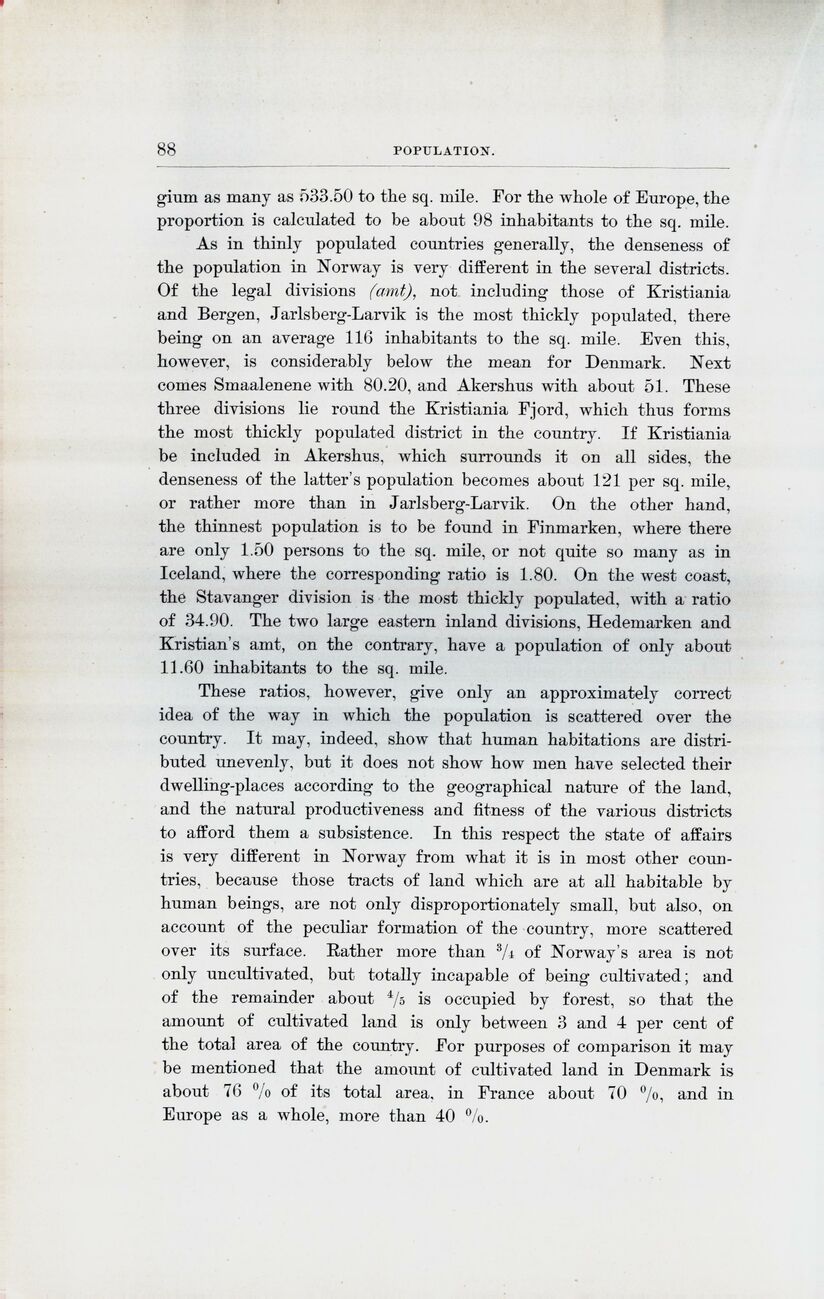
Full resolution (JPEG) - On this page / på denna sida - Population, by G. Amnéus

<< prev. page << föreg. sida << >> nästa sida >> next page >>
Below is the raw OCR text
from the above scanned image.
Do you see an error? Proofread the page now!
Här nedan syns maskintolkade texten från faksimilbilden ovan.
Ser du något fel? Korrekturläs sidan nu!
This page has been proofread at least once.
(diff)
(history)
Denna sida har korrekturlästs minst en gång.
(skillnad)
(historik)
Belgium as many as 533.50 to the sq. mile. For the whole of Europe, the
proportion is calculated to be about 98 inhabitants to the sq. mile.
As in thinly populated countries generally, the denseness of
the population in Norway is very different in the several districts.
Of the legal divisions (amt), not including those of Kristiania
and Bergen, Jarlsberg-Larvik is the most thickly populated, there
being on an average 116 inhabitants to the sq. mile. Even this,
however, is considerably below the mean for Denmark. Next
comes Smaalenene with 80.20, and Akershus with about 51. These
three divisions lie round the Kristiania Fjord, which thus forms
the most thickly populated district in the country. If Kristiania
be included in Akershus, which surrounds it on all sides, the
denseness of the latter’s population becomes about 121 per sq. mile,
or rather more than in Jarlsberg-Larvik. On the other hand,
the thinnest population is to be found in Finmarken, where there
are only 1.50 persons to the sq. mile, or not quite so many as in
Iceland, where the corresponding ratio is 1.80. On the west coast,
the Stavanger division is the most thickly populated, with a ratio
of 34.90. The two large eastern inland divisions, Hedemarken and
Kristian’s amt, on the contrary, have a population of only about
11.60 inhabitants to the sq. mile.
These ratios, however, give only an approximately correct
idea of the way in which the population is scattered over the
country. It may, indeed, show that human habitations are
distributed unevenly, but it does not show how men have selected their
dwelling-places according to the geographical nature of the land,
and the natural productiveness and fitness of the various districts
to afford them a subsistence. In this respect the state of affairs
is very different in Norway from what it is in most other
countries, because those tracts of land which are at all habitable by
human beings, are not only disproportionately small, but also, on
account of the peculiar formation of the country, more scattered
over its surface. Rather more than ¾ of Norway’s area is not
only uncultivated, but totally incapable of being cultivated; and
of the remainder about ⅘ is occupied by forest, so that the
amount of cultivated land is only between 3 and 4 per cent of
the total area of the country. For purposes of comparison it may
be mentioned that the amount of cultivated land in Denmark is
about 76 % of its total area, in France about 70 %, and in
Europe as a whole, more than 40 %.
<< prev. page << föreg. sida << >> nästa sida >> next page >>